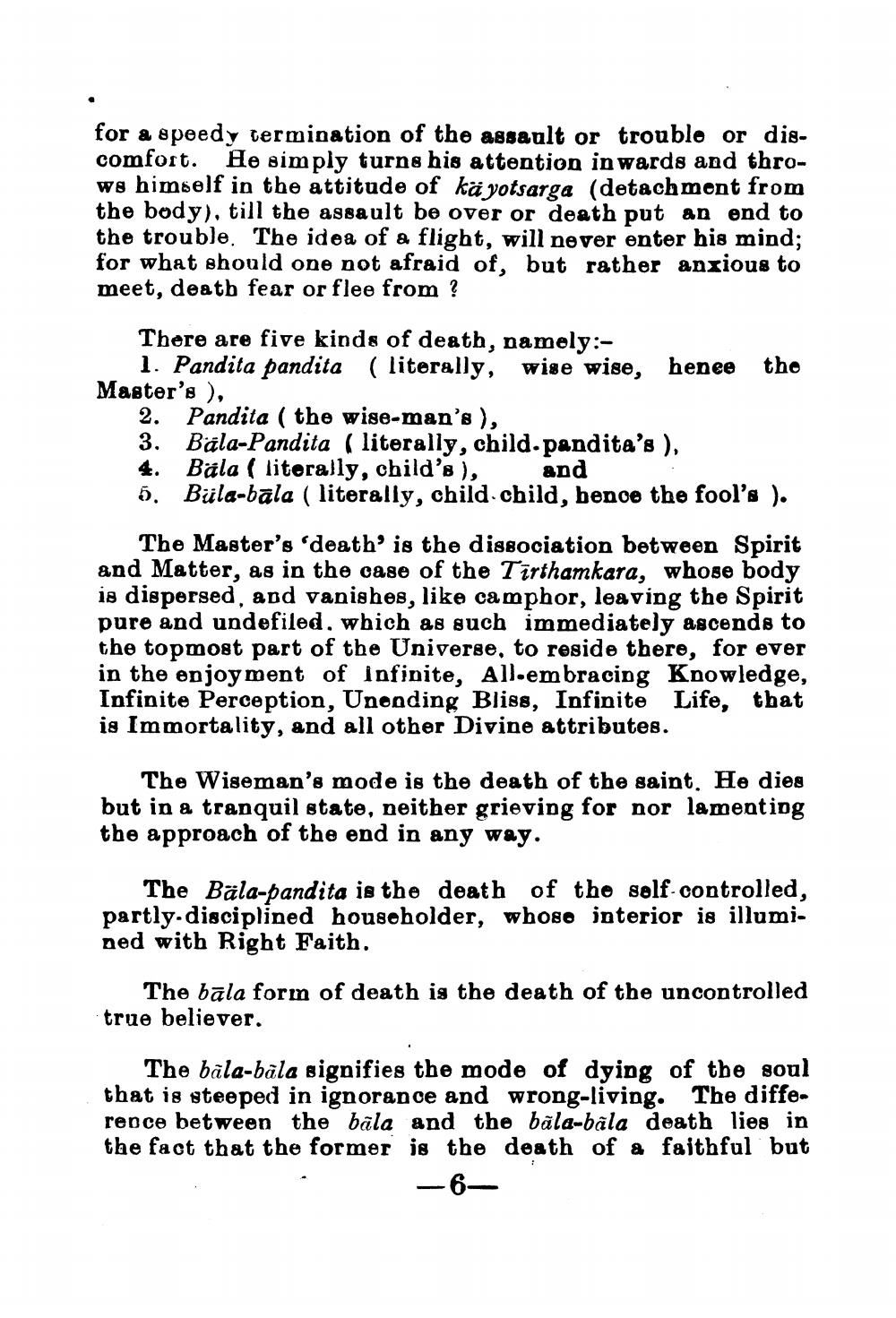________________
for a speedy termination of the assault or trouble or discomfort. He simply turns his attention in wards and throws himself in the attitude of ka yotsarga (detachment from the body), till the assault be over or death put an end to the trouble. The idea of a flight, will never enter his mind; for what should one not afraid of, but rather anxious to meet, deatb fear or flee from ?
There are five kinds of death, namely:
1. Pandita pandita (literally, wise wise, hence tho Master's ),
2. Pandita ( the wise-man's ), 3. Bäla-Pandita (literally, child.pandita's ), 4. Bala ( literally, child's ), and 5. Büla-bala ( literally, child.child, bence the fool's ).
The Master's death' is the dissociation between Spirit and Matter, as in the case of the Tirthamkara, whose body is dispersed, and vanishes, like camphor, leaving the Spirit pure and undefiled, which as auch immediately ascends to the topmost part of the Universe, to reside there, for ever in the enjoyment of infinite, All-embracing Knowledge, Infinite Perception, Unending Bliss, Infinite Life, that is Immortality, and all other Divine attributes.
The Wiseman's mode is the death of the saint. He dies but in a tranquil state, neither grieving for nor lamenting the approach of the end in any way.
The Bäla-pandita is the death of the self-controlled, partly-disciplined householder, whoso interior is illumined with Right Faith.
The bāla form of death is the death of the uncontrolled true believer.
The bala-bāla signifies the mode of dying of tbe soul that is steeped in ignorance and wrong-living. The difference between the bala and the bala-bala death lies in the fact that the former is the death of a faithful but
-6




